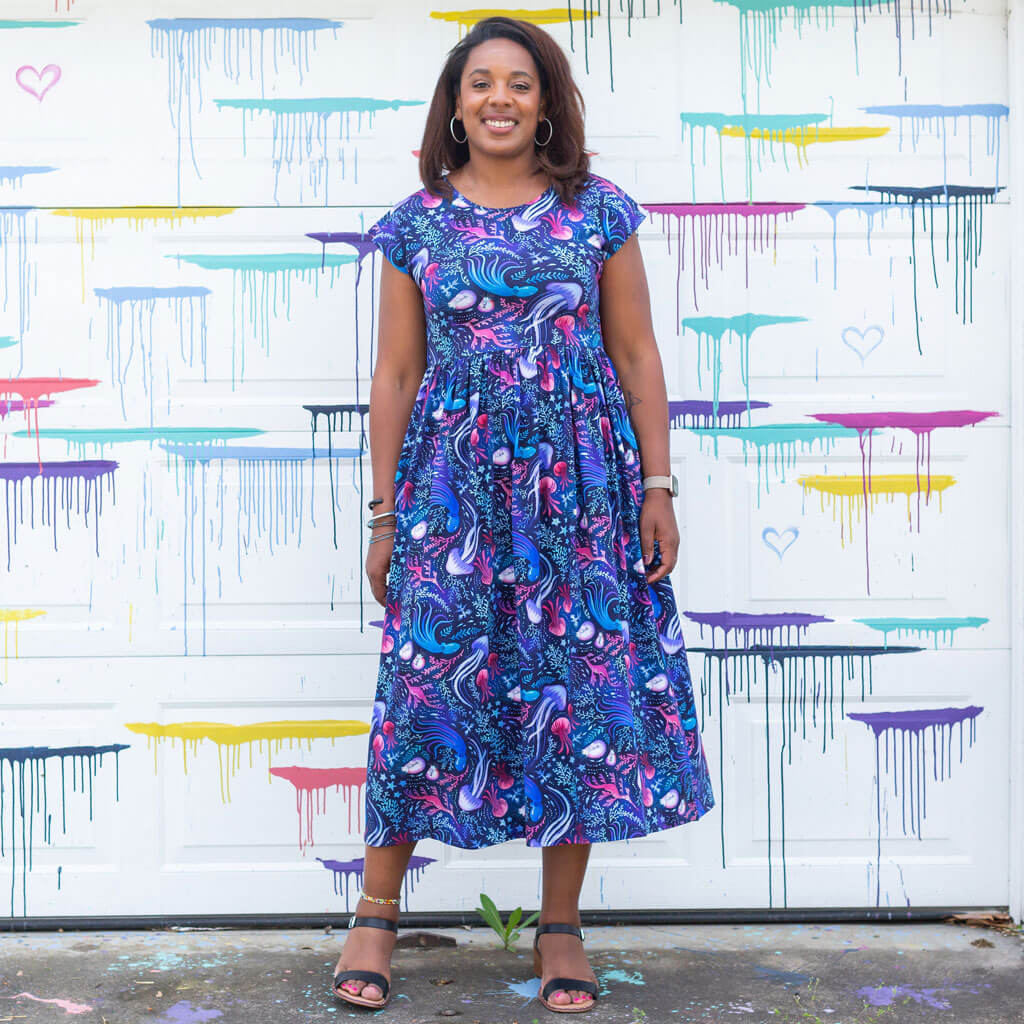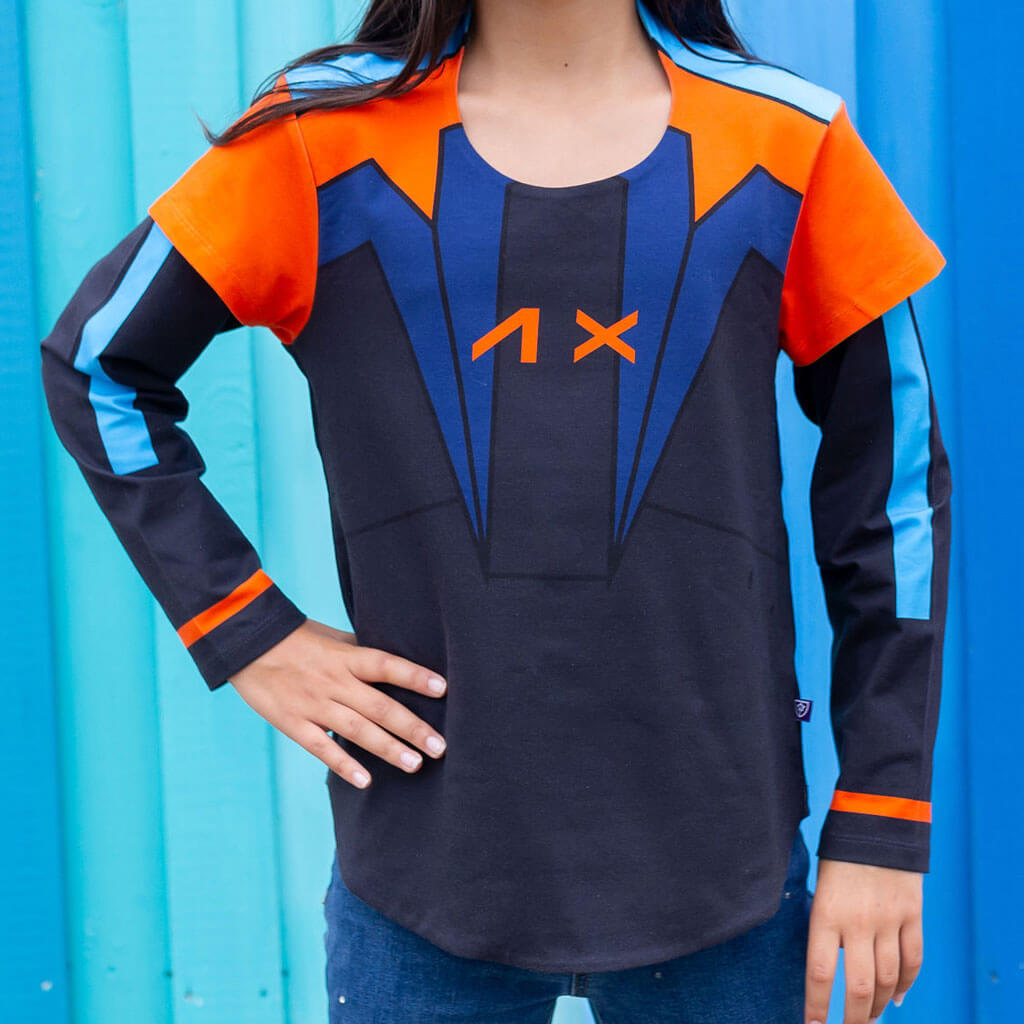Shop Now
New
Sale

"The Princess in Black", Princess Culture, and Embracing Femininity
March 01, 2019 4 min read 2 Comments

An interview with authors Shannon and Dean Hale
ESC: Princess culture can spark strong reactions in adults. What parts of the princess culture should we embrace?
Shannon and Dean: I think the idea of “princesses” that some parents react against is the submissive girl who does nothing but wait to be saved by a man. But in truth, there are almost no stories like that in the past fifty years. A princess is a girl with power—political power, social power. And a princess is a girl with fun accessories—like unicorn pets and sparkly gowns and fairy godmothers! I fear that some reactions against princesses are reactions against femininity—that the “best” girls are the ones who exhibit traditionally masculine traits and have traditionally masculine interests. I push back against that. Please don’t shame kids for having feminine interests or fascinations with princesses. Again, let them be both!

ESC: What influence does what we wear have on how we perceive ourselves, and how others perceive us? How do you use that in the books and for character development?
Shannon and Dean: I remember hearing a story about a girl who was her high school’s mascot. When she wore the suit, she could do a back flip. When she wasn’t in the suit, she couldn’t. Sometimes dressing a certain way makes us feel a certain way. When Princess Magnolia fights monsters, she likes to wear a mask and a cape. She’s in uniform! She’s ready! And sometimes a kid just wants the world to see them in a tiara.

ESC: The day I brought "The Princess in Black and the Science Fair Scare" home, my 7-year-old son noticed it on my desk. He immediately picked it up and sat on the couch and read it straight through and loved it. You've talked in the past about how we shouldn't divide literature into "boys' books" and "girls' books" and yet sadly even many librarians approach childrens' works from that point of view; tell us what is lost for both boys and girls in having "divided" literary genres, and what is gained when all the kids read everything.
Shannon and Dean: We’re all familiar with the concept of stories being both mirrors and windows: every child benefits from reading books about kids like them, so they feel seen, validated, worthy of a story; and every child benefits from reading books about kids different from them, so they understand and gain real empathy. Both set them up for success. What are we telling boys when we assume and even shame them (I’ve seen the shaming MANY times) away from reading stories about girls? That they should be ashamed to care about girls. That girls’ feelings and thoughts are beneath their notice. How will that affect how they treat girls in real life? And to the assumption that boys refuse to read books about girls—that just isn’t true, as your 7-year-old showed. They are taught that. Parents and gatekeepers have the power to un-teach that, and for the younger kids, to never teach it in the first place.

ESC: Many children "try on" different personality types at various ages as they grow and mature, as well as learning to be many different things at once. How does "The Princess in Black" encourage kids to experiment with their own developing personalities?
Shannon and Dean: So true! We have photos of our daughter dressed as: a ninja, a pirate, a tiger, a warrior, a robot, a princess, a fairy, a cat, a superhero. She likes it all! Sometimes we see parents and stories limit kids by labeling them “a tomboy” or “a girlie-girl” etc. What we love about the Princess in Black is that she doesn’t have to choose—she loves to put on the fluffy dresses and glass slippers and have tea parties, and she loves to put on a cape and fight monsters. We like to tell kids—you can be both!
ESC: Tell us a little about how you chose the science fair projects for each character, and in particular why Princess Magnolia's project (even in her own eyes) by comparison with some of the others is somewhat pedestrian.
Shannon and Dean: We love Magnolia’s princess friends! We’ve had character details about them (and their possible superhero alter-egos!) bubbling around in our brains since all the way back in book two. We wanted to have science projects that reflected their interests, were fun to look at, and also reminded us a little of science fair projects we’ve seen. But we’ve ALSO had the experience of not feeling quite good enough, of going to a Halloween party in a plastic grocery store mask when everyone else looks like they’re right out of a monster movie. Or giving a school presentation from notes on a napkin when everyone else has a multimedia presentation. Or going to the science fair with a plant poster when other people are demonstrating LEGITIMATE ENGINEERING MARVELS. We wanted it to be okay that Magnolia is an amazing hero, but pretty normal when it comes to the science fair. At least for her first try. Who knows what she’ll do next year!

Shannon and Dean Hale (photo credit: Jenn Florence)
Shannon and Dean Hale are the co-authors of The Princess in Black series.
"The Princess in Black" Science Giveaway!2 Responses
Jennifer
March 07, 2019
I LOVE Shannon Hale! Her books show that girls can be princesses and still kick butt!
Leave a comment
Comments will be approved before showing up.
Subscribe
Sign up to get the latest on sales, new releases and more …







Lynne Booher
March 19, 2019
We love Princess Awesome. My 5 year old granddaughter wants to be a “pediamagician”astronaut when she goes up, taking care of the little children accompanying their parents on trips to the moon and beyond. She wars her rocket ship apparel from Princess Awesome with pride!